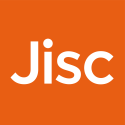¿Y SI CAMBIAN LOS PRECIOS? ANÁLISIS DE LA COMPOSICIÓN DE LOS SEGMENTOS DEL MERCADO TURÍSTICO INTERNACIONAL ANTE LAS FLUCTUACIONES DE LA INFLACIÓN
Resumen
El Índice de Precios al Consumo (IPC) tiene una volatilidad considerable que provoca cambios masivos en el mercado mundial; en consecuencia, podría afectar a la demanda turística y transformar los perfiles de los visitantes. El objetivo del trabajo es responder al efecto que tiene sobre los turistas internacionales y conocer el segmento o segmentos beneficiados por este contexto. La investigación también considera que el IPC es heterogéneo e involucra diferentes tipos para ampliar el análisis. El análisis correrá un modelo de Clases Latentes sobre los datos de la encuesta de turismo internacional realizada por la INE, primero para obtener los clusters y después para analizar la elasticidad de las variables exógenas sobre los grupos. Los resultados muestran cómo el perfil de bajo gasto es más sensible a los cambios de precios; mientras, otros de mayor valor añadido son más inelásticos. La principal conclusión es que los negocios centrados en el segmento de sol y playa y bajo gasto deberían adaptar su oferta incrementando el valor percibido por el turista internacional.
Descargas
-
Resumen246
-
PDF INGLÉS 268
-
PDF ESPAÑOL268
Citas
Aguilar, M. I., and Díaz, B. (2019). Length of stay of international tourists in Spain: A parametric survival analysis. Annals of Tourism Research, 79, 102768. https://doi.org/10.1016/j.annals.2019.102768
Alegre, J., and Pou, L. (2006). The length of stay in the demand for tourism. Tourism Management, 27(6), 1343-1355. https://doi.org/10.1016/j.tourman.2005.06.012
Almeida-García F., Domigunez-Azcue, J, Mercadé-Melé, P., and Pérez-Tapia, G. (2020) Can a destination really change its image? The roles of information sources, motivations, and visits. Tourism Management Perspective, 34: 100662. https://doi.org/10.1016/j.tmp.2020.100662
Alonso, J. M., and Socorro, M. P. (2024). Blind booking: The effects on passengers' purchase decision, airlines’ profitability, and tourist destinations. Research in Transportation Economics, 105, 101444. https://doi.org/10.1016/j.retrec.2024.101444
Barreal, J., Vena-Oya, J., and Mercadé-Melé, P. (2023). Addressing regional tourism policy: Tools for sustainable destination management. Journal of Vacation Marketing, 13567667231179756. https://doi.org/10.1177/13567667231179756
Castañeda, J. A., Vena-Oya, J., Rodriguez-Molina, M. A., and Martinez-Suarez, R. (2019). Analysis of domestic cultural tourism spend by segment in the city of Granada: An observational data approach. Tourism Management Perspectives, 29, 18-30. https://doi.org/10.1016/j.tmp.2018.10.001
Doğrul, H. G., and Soytas, U. (2010). Relationship between oil prices, interest rate, and unemployment: Evidence from an emerging market. Energy Economics, 32(6), 1523–1528. https://doi.org/10.1016/j.eneco.2010.09.005
Durani, F., Anwar, A., Sharif, A., Hamid, A., Ali, S., and Syed, Q. R. (2024). Exploring the link between inflation, tourism, trade, foreign direct investment, and renewable energy consumption: evidence from novel wavelet quantile correlation approach. Clean Technologies and Environmental Policy, 1-15. https://doi.org/10.1007/s10098-024-03073-w
Ekanayake, E. M., Halkides, M., and Ledgerwood, J.R. (2012). Inbound International Tourism to The United States: A Panel Data Analysis. International Journal of Management, and Marketing Research 5, 15–27. https://ssrn.com/abstract=2162573
Eurostat (2023). Inflation in the euro area. Available at: https://ec.europa.eu/eurostat/statistics-explained/index.php?title=Inflation_in_the_euro_area#Euro_area_annual_inflation_rate_and_its_main_components
Eusébio, C., Carneiro, M. J., Kastenholz, E., Figueiredo, E., and da Silva, D. S. (2017). Who is consuming the countryside? An activity-based segmentation analysis of the domestic rural tourism market in Portugal. Journal of Hospitality and Tourism Management, 31, 197-210. https://doi.org/10.1016/j.jhtm.2016.12.006
Gorgoglione, M., Garavelli, A. C., and Sen, S. (2024). What is the most profitable targeting strategy from mass marketing to personalization? Results from a simulation in tourism. Asia Pacific Journal of Tourism Research, 1-19. https://doi.org/10.1080/10941665.2024.2358314
INE (2023a). Encuesta de Gasto Turístico. EGATUR. Instituto Nacional de Estadística. Disponible en: https://www.ine.es/dyngs/INEbase/es/operacion.htm?c=Estadistica_C&cid=1254736177002&menu=ultiDatos&idp=1254735576863
INE (2023b) Estadística de Movimientos Turísticos en Frontera y Encuesta de Gasto Turístico (FRONTUR-EGATUR) Metodología. Disponible en: https://www.ine.es/daco/daco42/frontur/frontur_egatur_metodologia.pdf
INE (2023c) Cuestionario FRONTUR-EGATUR. Disponible en: https://www.ine.es/daco/daco42/frontur/frontur_egatur_cuestionario.pdf
INE (2023d) Índice de Precios al Consumo. Instituto Nacional de Estadística. Disponible en: https://www.ine.es/dynt3/inebase/index.htm?padre=8423&capsel=8423
Kastenholz, E., Carneiro, M. J., and Eusébio, C. (2018). Diverse socializing patterns in rural tourist experiences–a segmentation analysis. Current Issues in Tourism, 21(4), 401-421. https://doi.org/10.1080/13683500.2015.1087477
Katircioglu, S. T., Sertoglu, K., Candemir, M., and Mercan, M. (2015). Oil price movements and macroeconomic performance: Evidence from twenty-six OECD countries. Renewable and Sustainable Energy Reviews, 44, 257–270. https://doi.org/10.1016/j.rser.2014.12.016
Khaidi, S. M., Abu, N., and Muhammad, N. (2019). Tourism demand forecasting–a review on the variables and models. In Journal of Physics: Conference Series (Vol. 1366, No. 1, p. 012111). IOP Publishing. https://doi.org/10.1088/1742-6596/1366/1/012111
Khalid, U., Okafor, L. E., and Shafiullah, M. (2020). The effects of economic and financial crises on international tourist flows: A cross-country analysis. Journal of Travel Research, 59 (2), 315-334. https://doi.org/10.1177/0047287519834360
Khoshnevis-Yazdi, S., and Khanalizadeh, B. (2017). Tourism demand: A panel data approach. Current Issues in Tourism, 20 (8), 787-800. https://doi.org/ 10.1080/13683500.2016.1170772
Lee, Y. J. A., Jang, S., and Kim, J. (2020). Tourism clusters and peer-to-peer accommodation. Annals of Tourism Research, 83, 102960. https://doi.org/10.1016/j.annals.2020.102960
Lim, C., Min, J. C., and McAleer, M. (2008). Modelling income effects on long and short haul international travel from Japan. Tourism Management, 29 (6), 1099-1109. https://doi.org/10.1016/j.tourman.2008.02.012
Linzer, D. A., and Lewis, J. B. (2011). poLCA: An R package for polytomous variable latent class analysis. Journal of Statistical Software, 42 (10), 1-29. https://doi.org/10.18637/jss.v042.i10
Mangion, M. L., Durbarry, R., and Sinclair, M. T. (2005). Tourism competitiveness: price and quality. Tourism Economics, 11 (1), 45-68. https://doi.org/10.5367/0000000053297202
Meo, M. S., Chowdhury, M. A. F., Shaikh, G. M., Ali, M., and Masood Sheikh, S. (2018). Asymmetric impact of oil prices, exchange rate, and inflation on tourism demand in Pakistan: new evidence from nonlinear ARDL. Asia Pacific Journal of Tourism Research, 23 (4), 408-422. https://doi.org/10.1080/10941665.2018.1445652
Mohammed, I., Guillet, B. D., and Law, R. (2019). Modeling dynamic price dispersion of hotel rooms in a spatially agglomerated tourism city for weekend and midweek stays. Tourism Economics, 25(8), 1245-1264. https://doi.org/10.1177/1354816619826829
Morley, C. L. (1994). The use of CPI for tourism prices in demand modelling. Tourism Management, 15 (5), 342-346. https://doi.org/10.1016/0261-5177(94)90088-4
Naccache, T. (2010). Slow oil shocks and the “weakening of the oil price–macroeconomy relationship”. Energy Policy, 38 (5), 2340–2345. https://doi.org/10.1016/j.enpol.2009.12.021
Oh, C. O., and Ditton, R. B. (2005). An evaluation of price measures in tourism demand models. Tourism Analysis, 10 (3), 257-268. https://doi.org/10.3727/108354205775322943
Ongan, S., Işik, C., and Özdemir, D. (2017). The effects of real exchange rates and income on international tourism demand for the USA from some European Union countries. Economies, 5 (4), 51. https://doi.org/10.3390/economies5040051
Pulido-Fernández, J. I., Cárdenas-García, P. J., and Carrillo-Hidalgo, I. (2017). Explaining tourism expenditure based on trip characteristics in emerging urban-cultural destinations. Tourism Review, 72 (1), 68–86. https://doi.org/10.1108/TR-09-2016-0040
Pulido‐Fernández, J. I., Casado‐Montilla, J., López‐Sánchez, Y., Durán‐Román, J. L., and Carrillo‐Hidalgo, I. (2024). Gen Zers' Behaviour Towards Sustainability in a Mature Coastal Destination. International Journal of Tourism Research, 26 (5), e2758. https://doi.org/10.1002/jtr.2758
Ralston, R. W. (1999). Economy and race: Interactive determinants of property crime in the United States, 1958–1995. American Journal of Economics and Sociology, 58 (3), 405–434. https://doi.org/10.1111/j.1536-7150.1999.tb03295.x
Reinhart, C. M., and Rogoff, K. S. (2011). From financial crash to debt crisis. American Economic Review, 101 (5), 1676-1706. https://doi.org/10.1257/aer.101.5.1676
Rosselló, J., and Sansó, A. (2017). Yearly, monthly and weekly seasonality of tourism demand: A decomposition analysis. Tourism Management, 60, 379-389. https://doi.org/10.1016/j.tourman.2016.12.019
Trovato, M. R., and Ventura, V. (2024). Values and Prices in the Historic City. Divergences and Value Creation. In International Conference on Computational Science and Its Applications (pp. 3-20). Cham: Springer Nature Switzerland. https://doi.org/10.1007/978-3-031-65318-6
Seetanah, B., and Khadaroo, J. (2009). An analysis of the relationship between transport capital and tourism development in a dynamic framework. Tourism Economics, 15 (4), 785-802. https://doi.org/10.5367/000000009789955215
Song, H., and Witt, S. F. (2000). Tourism demand modelling and forecasting: Modern econometric approaches. Oxford: Routledge. ISBN: 0080436730, 9780080436739
Song, H., Li, G., Witt, S. F., and Fei, B. (2010). Tourism demand modelling and forecasting: how should demand be measured? Tourism Economics, 16 (1), 63-81. https://doi.org/10.5367/000000010790872213
Song, H., Lin, S., Witt, S. F., and Zhang, X. (2011). Impact of financial/economic crisis on demand for hotel rooms in Hong Kong. Tourism Management, 32 (1), 172-186. https://doi.org/10.1016/j.tourman.2010.05.006
Song, H., Qiu, R. T., and Park, J. (2023). Progress in tourism demand research: Theory and empirics. Tourism Management, 94, 104655. https://doi.org/10.1016/j.tourman.2022.104655
Tiganis, A., and Chrysochou, P. (2024). Exploring tourist preferences for local food: a Best-Worst Scaling analysis and market segmentation approach. British Food Journal, 126 (12), 4093-4107. https://doi.org/10.1108/BFJ-01-2024-0068
Untong, A., Ramos, V., Kaosa-Ard, M., and Rey-Maquieira, J. (2014). Thailand's long-run tourism demand elasticities. Tourism Economics, 20 (3), 595-610. https://doi.org/10.5367/te.2013.0280
Vena-Oya, J., Castañeda-García, J. A., and Rodriguez-Molina, M. A. (2022, a). Forecasting a post-COVID-19 economic crisis using fuzzy cognitive maps: a Spanish tourism-sector perspective. Current Issues in Tourism, 25 (13), 2048-2062. https://doi.org/10.1080/13683500.2021.1944995
Vena-Oya, J., Castañeda-García, J. A., and Rodríguez-Molina, M. Á. (2022, b). Determinants of the likelihood of tourist spending in cultural micro-destinations: type, timing, and distance of the activity as predictors. SAGE Open, 12 (3), 21582440221125422. https://doi.org/10.1177/21582440221125422
Wan, S. K., and Song, H. (2018). Forecasting turning points in tourism growth. Annals of Tourism Research, 72, 156-167. https://doi.org/10.1016/j.annals.2018.07.010
Wang, Y. S. (2009). The impact of crisis events and macroeconomic activity on Taiwan's international inbound tourism demand. Tourism Management, 30 (1), 75-82. https://doi.org/10.1016/j.tourman.2008.04.010
Yap, G., and Allen, D. (2011). Investigating other leading indicators influencing Australian domestic tourism demand. Mathematics and Computers in Simulation, 81 (7), 1365-1374. https://doi.org/10.1016/j.matcom.2010.05.005
Zheng, B., and Zhang, Y. (2013). Household expenditures for leisure tourism in the USA, 1996 and 2006. International Journal of Tourism Research, 15 (2), 197-208. https://doi.org/10.1002/jtr.880
Zopiatis, A., and Pericleous, K. (2021). Profiling the package traveler: An expenditure-based segmentation endeavor. Journal of Destination Marketing & Management, 21, 100636. https://doi.org/10.1016/j.jdmm.2021.100636
Derechos de autor 2025 Cuadernos de Turismo

Esta obra está bajo una licencia internacional Creative Commons Atribución-NoComercial-SinDerivadas 4.0.
Las obras que se publican en esta revista están sujetas a los siguientes términos:
1. El Servicio de Publicaciones de la Universidad de Murcia (la editorial) conserva los derechos patrimoniales (copyright) de las obras publicadas, y favorece y permite la reutilización de las mismas bajo la licencia de uso indicada en el punto 2.
2. Las obras se publican en la edición electrónica de la revista bajo una licencia Creative Commons Reconocimiento-NoComercial-SinObraDerivada 3.0 España (texto legal). Se pueden copiar, usar, difundir, transmitir y exponer públicamente, siempre que: i) se cite la autoría y la fuente original de su publicación (revista, editorial y URL de la obra); ii) no se usen para fines comerciales; iii) se mencione la existencia y especificaciones de esta licencia de uso.
3. Condiciones de auto-archivo. Se permite y se anima a los autores a difundir electrónicamente las versiones pre-print (versión antes de ser evaluada) y/o post-print (versión evaluada y aceptada para su publicación) de sus obras antes de su publicación, ya que favorece su circulación y difusión más temprana y con ello un posible aumento en su citación y alcance entre la comunidad académica. Color RoMEO: verde.





_.jpg)








